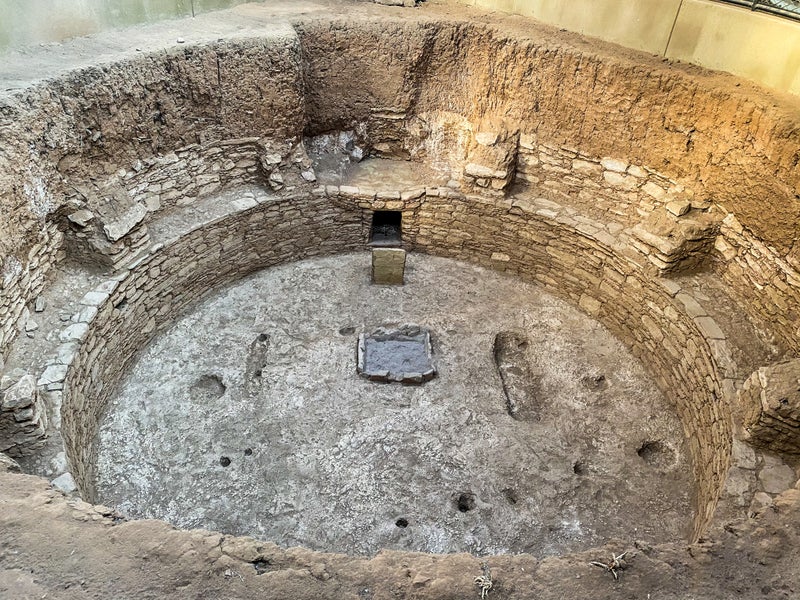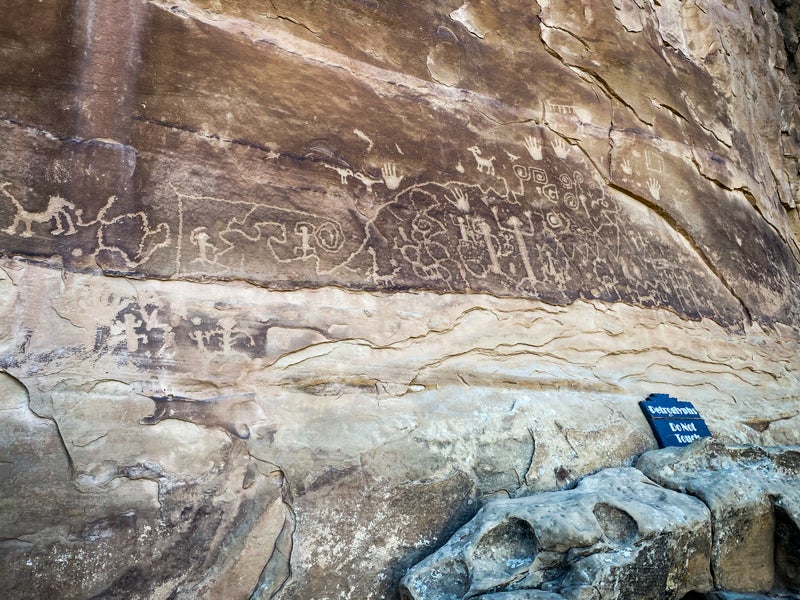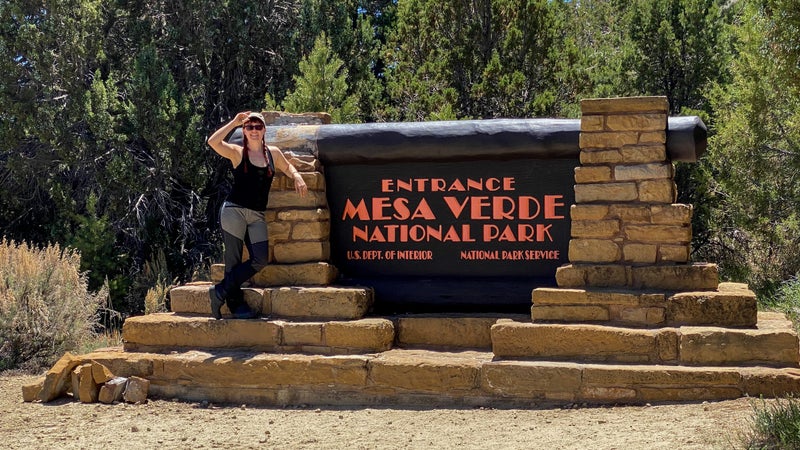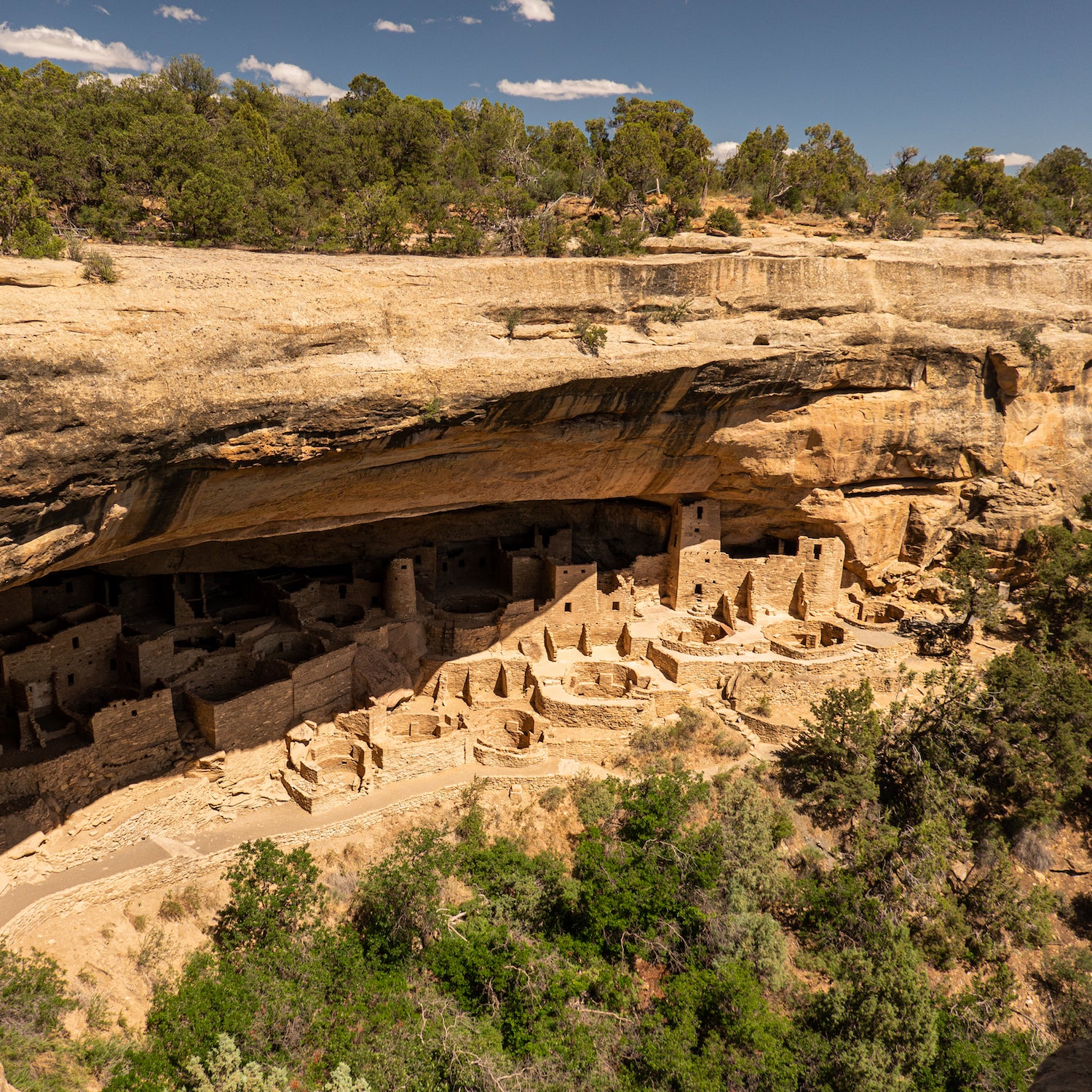62 Parks Traveler started with a simple goal: to visit every U.S. national park in one year. Avid backpacker and public lands nerd Emily Pennington saved up, built out a tiny van to travel and live in, and hit the road. The parks as we know them are rapidly changing, and she wanted to see them before it’s too late.
Pennington has returned to traveling and is committed to following CDC guidelines during the COVID-19 pandemic to ensure the safety of herself and others. She’s visiting new parks as they open and closely adhering to best safety practices.
In the brilliant sun of a warm June afternoon in western Colorado, I found myself traveling back in time. I hopped down a series of stone steps, took a sharp left turn, and felt my heart skip a beat. There, sprawled out below a sandstone plateau dotted with piñon pines and juniper trees, stood the 800-year-old remains of Cliff Palace, an ancient city of the Ancestral Pueblo people.
The largest and best known of the Mesa Verde’s native dwellings, Cliff Palace is a wonder to behold. The site contains 150 rooms and 23 kivas (circular ceremonial spaces), indicating that it was once a location of great social and spiritual importance.

Though Mesa Verde may be primarily dedicated to preserving past cultural relics, the park’s use of technology to educate visitors is some of the best in the system. There’s a robust mobile app with a full-blown audio tour of more than a dozen sites, a podcast exploring the lives of the Ancestral Pueblo people, and a series of virtual tours of the most famous sites.
As I stood and stared at the vast ruins before me, I pressed play on my phone and found myself even more deeply transported. The park enlisted TJ Atsye, a ranger and member of the Laguna Pueblo Tribe, to narrate the self-guided driving and walking tour of the Mesa Top Loop Road. She chronicled the history of her ancestors from 600 CE to about 1300 CE, from pit houses to the impressive masonry of the cliff’s-edge villages.
At one point in the recording, Atsye mentioned that her people’s history and stories have always been passed down orally, and that being able to share them with visitors via audio tour rather than written signs felt special. Experts still don’t know why the people of Mesa Verde gradually left in the late 1200s, but having their stories pumped into my earbuds as I strolled around abandoned temples and excavated stone dwellings truly breathed new life into them.

After a solid night’s sleep in the park’s only campground, I was in the mood to hike. I sped off toward the park headquarters to check out Spruce Tree House and the interpretive 2.4-mile trail to Petroglyph Point. Though access to the treehouse has been closed since 2015 due to rockfall, the site remains a worthy stop on any visitor’s list.
Stepping delicately from boulder to boulder, I found myself impressed with the multistory ruins and wondering what life in the high cliffs might have been like centuries ago. Then I got a taste of it firsthand.
I took a right turn and descended the Spruce Canyon Trail, passing through a forest full of edible and ceremonial plants marked with numbered signs. Next, I ascended a series of steep stone stairs to get to the petroglyphs and sat in silence among them for a long while. The trail finishes with a bang, as hikers must scramble hand over foot to climb several massive boulders on their way to the mesa top, where the modern world and parking lot await.
Though the pandemic and canceled ranger tours initially botched my plans, I took refuge in a quieter, more self-guided experience at Mesa Verde, one that allowed my history-loving imagination to roam freely.

62 Parks Traveler: Mesa Verde Info
Size: 52,074 acres
Location: Southwestern Colorado
Created In: 1906 (national park)
Best For: Cultural tours, short hikes, scenic drives, car camping
When to Go: Spring (26 to 71 degrees), summer (51 to 89 degrees), and fall (29 to 76 degrees) all offer moderate daytime temperatures due to the park’s high elevation. Winter (18 to 44 degrees) is chilly and often burdened with snow.
Where to Stay: Morefield Campground, the only campground inside the park, provides visitors with many creature comforts, like showers, coin-operated laundry, and a camp store, in addition to standard fare like grills and picnic tables. In summer, the tiny camp café hosts an all-you-can-eat pancake breakfast every morning.
Mini Adventure: Take a scenic drive along the Mesa Top Loop Road. Download the Mesa Verde phone app before you get to the park, and enjoy a self-guided audio tour with 11 stops along the way. Some sites require a short hike to the ruins, but most are fully accessible to those with impaired mobility.
Mega Adventure: Go on an adventurous ranger-guided tour of Balcony House. Though dwelling tours are currently suspended for 2020, those planning a future trip won’t want to miss this “Indiana Jones–style” tour where visitors get to climb a 32-foot ladder and squeeze through a narrow tunnel to explore one of the park’s best preserved sites.

